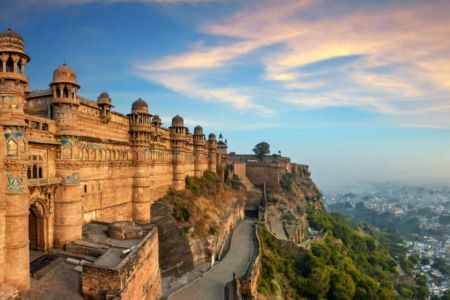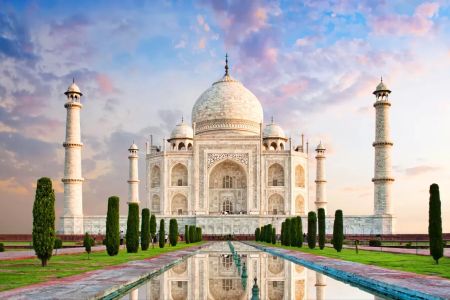Exploring India’s Cultural Landmarks: A Journey through Time
India is a land of ancient traditions, vibrant cultures, and awe-inspiring monuments. From the majestic temples of Varanasi to the stunning architecture of the Taj Mahal, traveling through India’s cultural landmarks is a journey like no other. Whether you are an art lover, a history enthusiast, or someone simply looking to explore the richness of Indian culture, this guide will provide you with the insights you need to plan the perfect cultural tour across the country.
1. Why Visit India’s Cultural Landmarks?
India is home to some of the most historically significant and culturally enriching sites in the world. Visiting these landmarks allows you to immerse yourself in the country’s diverse heritage. With over 3,000 years of history, India offers a blend of ancient temples, royal palaces, colonial-era monuments, and modern-day cultural spaces. The experiences these landmarks offer are both spiritual and educational, making them must-visit destinations for anyone seeking to understand India's essence.
2. Top Cultural Landmarks to Include in Your Itinerary
When traveling through India’s cultural landmarks, some places are simply unmissable. Here are a few top picks:
- Taj Mahal, Agra – A symbol of eternal love and a UNESCO World Heritage Site.
- Qutub Minar, Delhi – A 12th-century minaret, an incredible feat of Mughal architecture.
- Varanasi Ghats, Varanasi – Known for its spiritual significance and as a place for purification of the soul.
- Amer Fort, Jaipur – A majestic palace offering stunning views of the surrounding landscape.
- Khajuraho Temples, Madhya Pradesh – A group of temples famous for their intricate carvings.
Each of these landmarks tells a different story, providing a glimpse into India’s vast and varied past. They’re not just tourist spots but living embodiments of India’s heritage.
3. Best Time to Visit India’s Cultural Landmarks
India’s cultural landmarks are spread across diverse landscapes and climates, making it essential to plan your visit around the right time. The best months to explore these sites are generally between October and March, when the weather is cooler and more pleasant. Avoid visiting during the monsoon season (June to September) as heavy rains can make travel difficult. Additionally, some sites may be more crowded during peak tourist seasons, so planning ahead is crucial.
4. Tips for Navigating India’s Cultural Sites
When traveling through India’s cultural landmarks, there are a few key things to keep in mind to ensure a smooth and enriching experience:
- Do Your Research: Each landmark has a unique history, so learning about its significance can deepen your understanding.
- Hire a Guide: Local guides are invaluable in explaining the history and cultural context of the sites.
- Dress Modestly: Especially when visiting temples or religious sites, it’s important to dress respectfully.
- Plan Your Travel: India’s landmarks are spread out across the country, so make sure to plan your route and travel times accordingly.
- Carry Cash: While many places accept cards, some sites might only take cash, so it’s always best to have some on hand.
By following these tips, you can ensure that your experience exploring India’s cultural landmarks is both enjoyable and educational.
5. Exploring India’s Diverse Cultural Heritage
India’s cultural heritage is not confined to just historical monuments. It extends to the country’s diverse traditions, festivals, art forms, and cuisine. In cities like Chennai and Kolkata, you can witness classical dance performances and enjoy delicious local dishes that tell the story of India’s cultural evolution. If you’re interested in more than just sightseeing, consider incorporating experiences like cooking classes or traditional music sessions into your itinerary.
6. Budgeting for a Cultural Tour in India
When planning your trip, it’s important to keep in mind that India offers a wide range of experiences that can cater to different budgets. For those traveling on a budget, many cultural sites are free or offer very affordable entrance fees. However, luxury travelers can opt for guided tours, private experiences, and stays in heritage hotels that provide a more opulent experience. It’s also worth considering how long you plan to stay in each location, as travel costs within India can vary widely depending on the distance and mode of transport.
Conclusion: Make Your Journey through India’s Cultural Landmarks Unforgettable
Exploring India’s cultural landmarks offers an enriching experience unlike any other. With a well-thought-out itinerary, the right timing, and a bit of local knowledge, you can immerse yourself in India’s deep history, diverse cultures, and unique traditions. Whether you’re visiting the iconic Taj Mahal, walking the ghats in Varanasi, or experiencing a classical dance in Chennai, every step of the journey is filled with awe and wonder.
Ready to start your adventure? Discover more about traveling through India’s cultural landmarks and plan your trip today with Travel India One. Get the most out of your journey by exploring India's cultural and historical treasures. Visit our website for expert travel tips and booking options for your next trip to India.
<
SEO Title>How to Travel Through India’s Cultural Landmarks for an Unforgettable Journey
<
SEO Keywords>travel through India’s cultural landmarks, best cultural landmarks in India, India travel tips, cultural tourism in India, explore India's heritage, India landmarks, cultural heritage of India
<
SEO Description>Discover the best way to travel through India's cultural landmarks. Explore India's rich cultural heritage, from ancient temples to historical monuments, and plan your trip with practical tips and expert advice.











